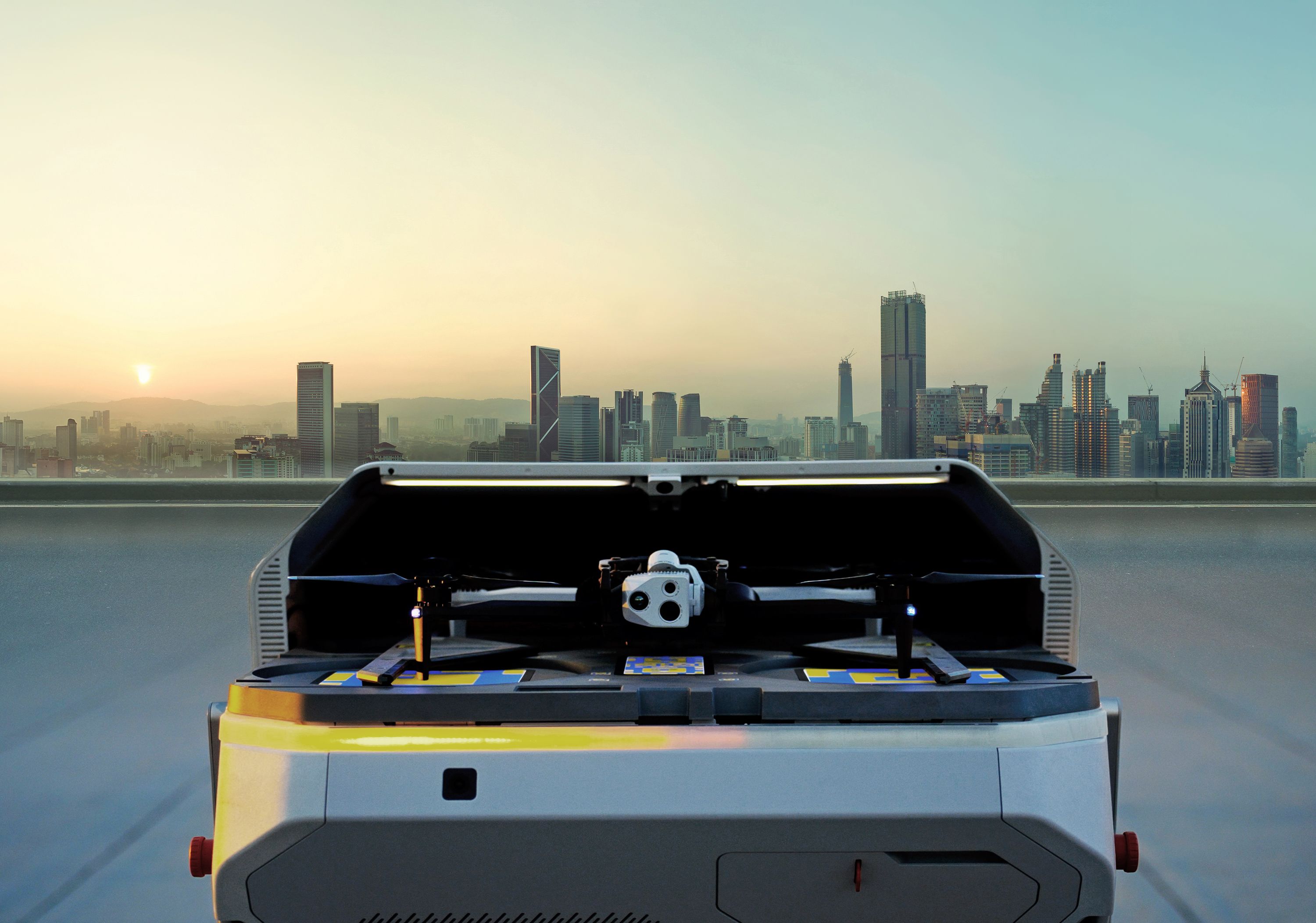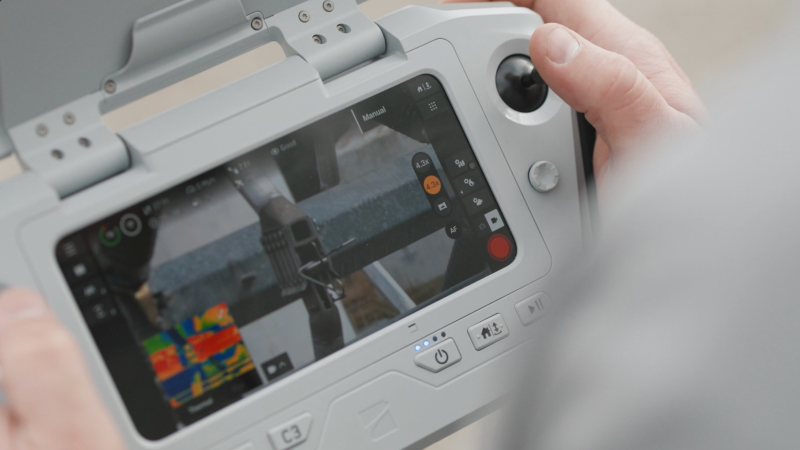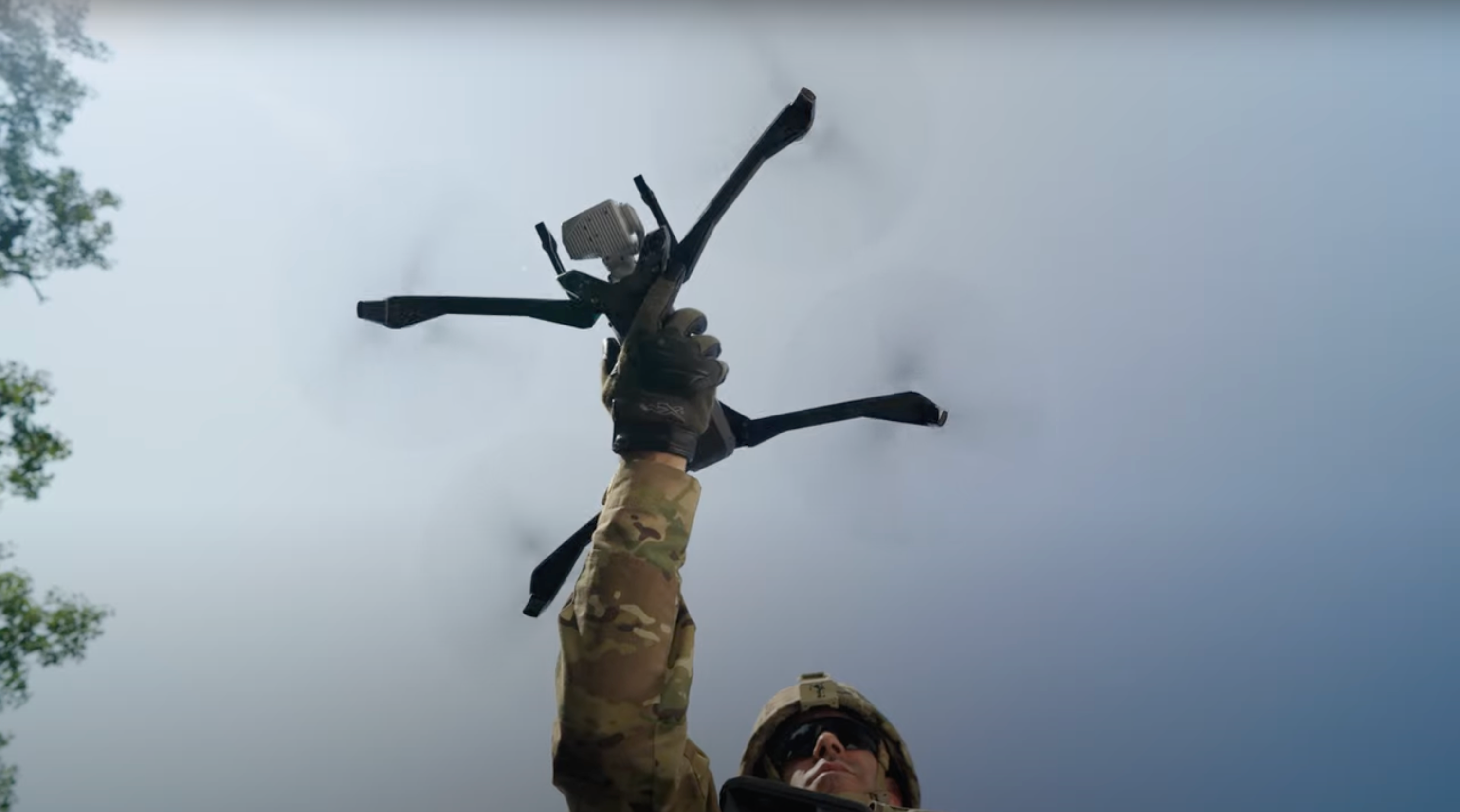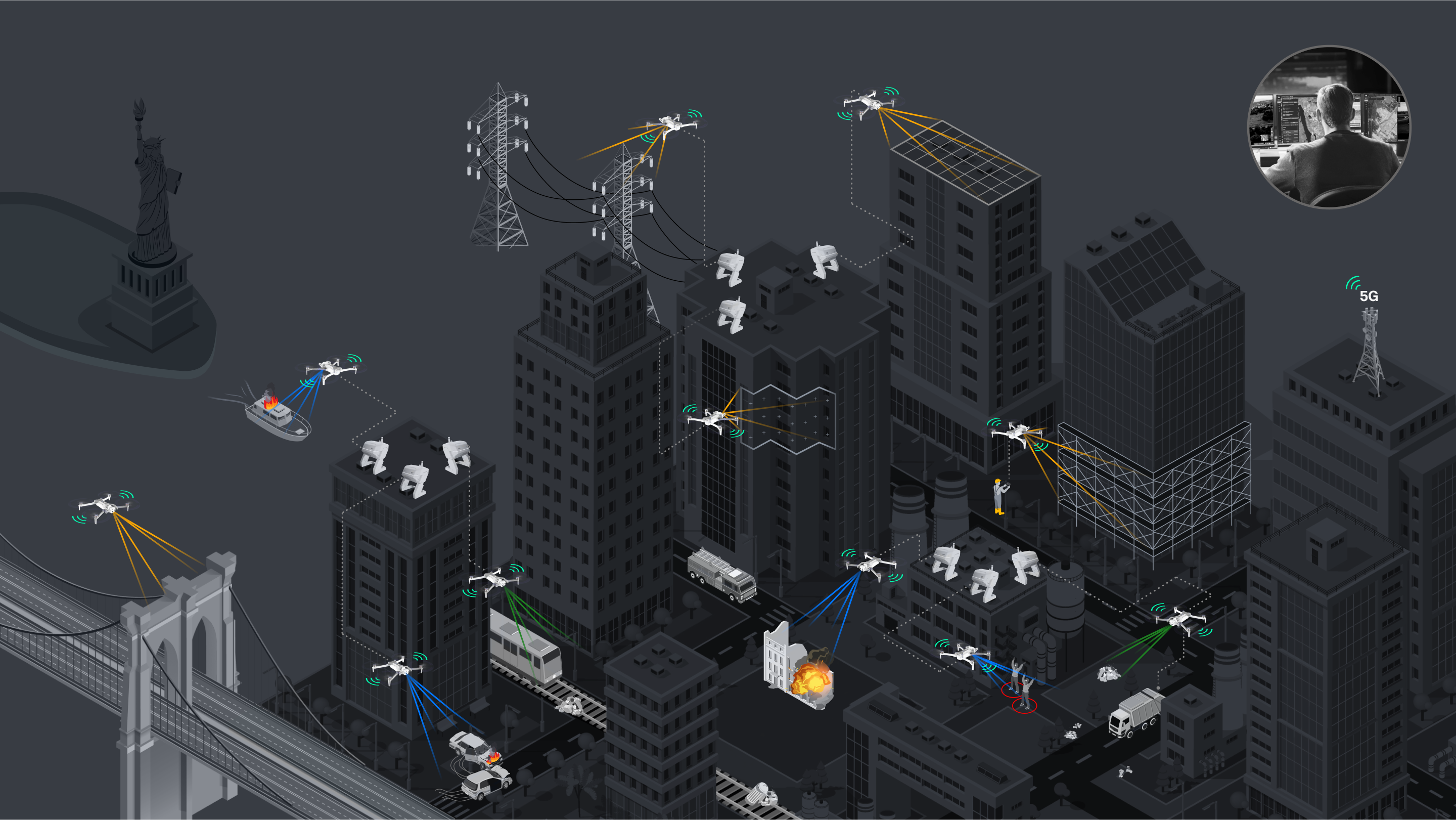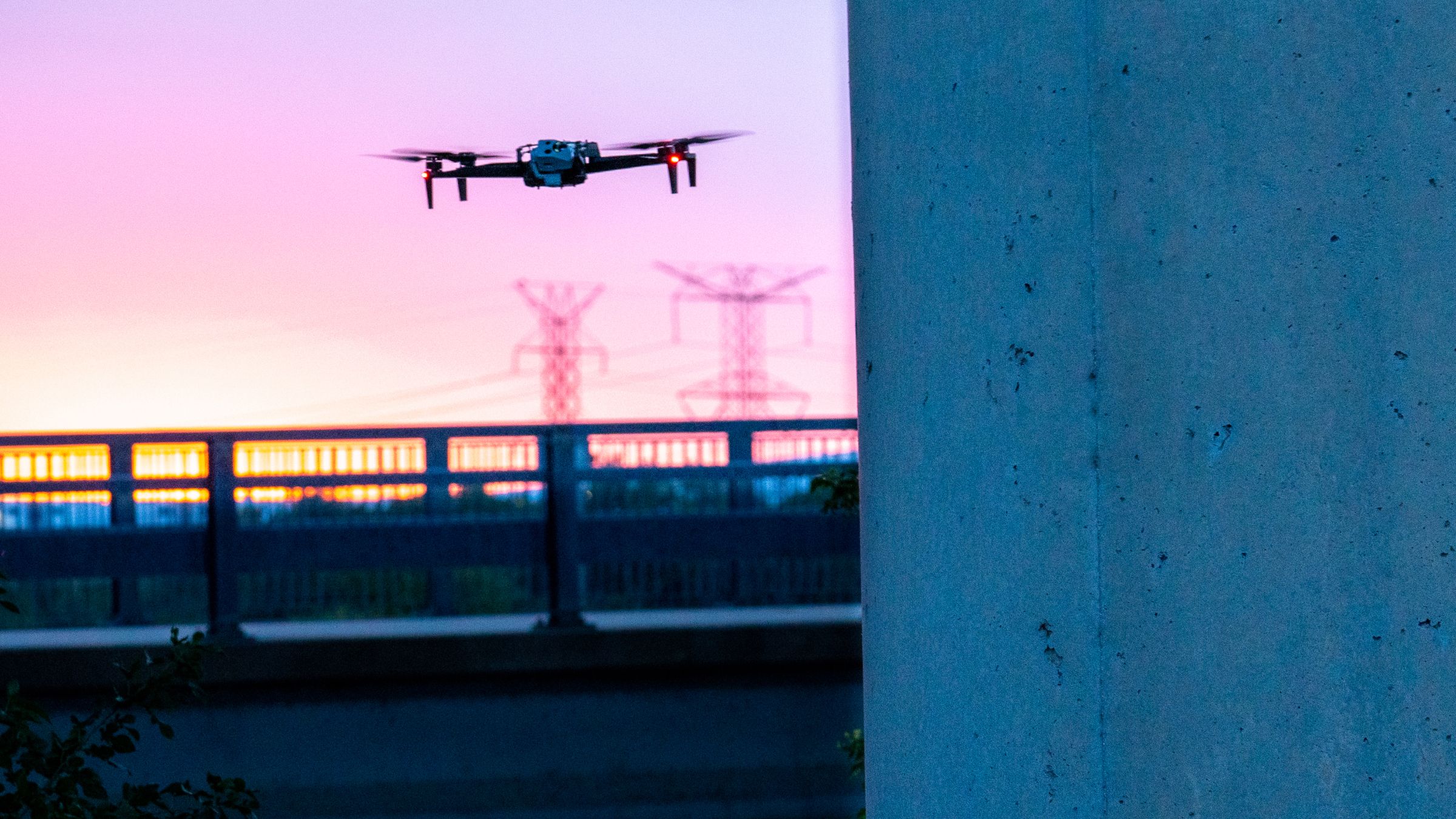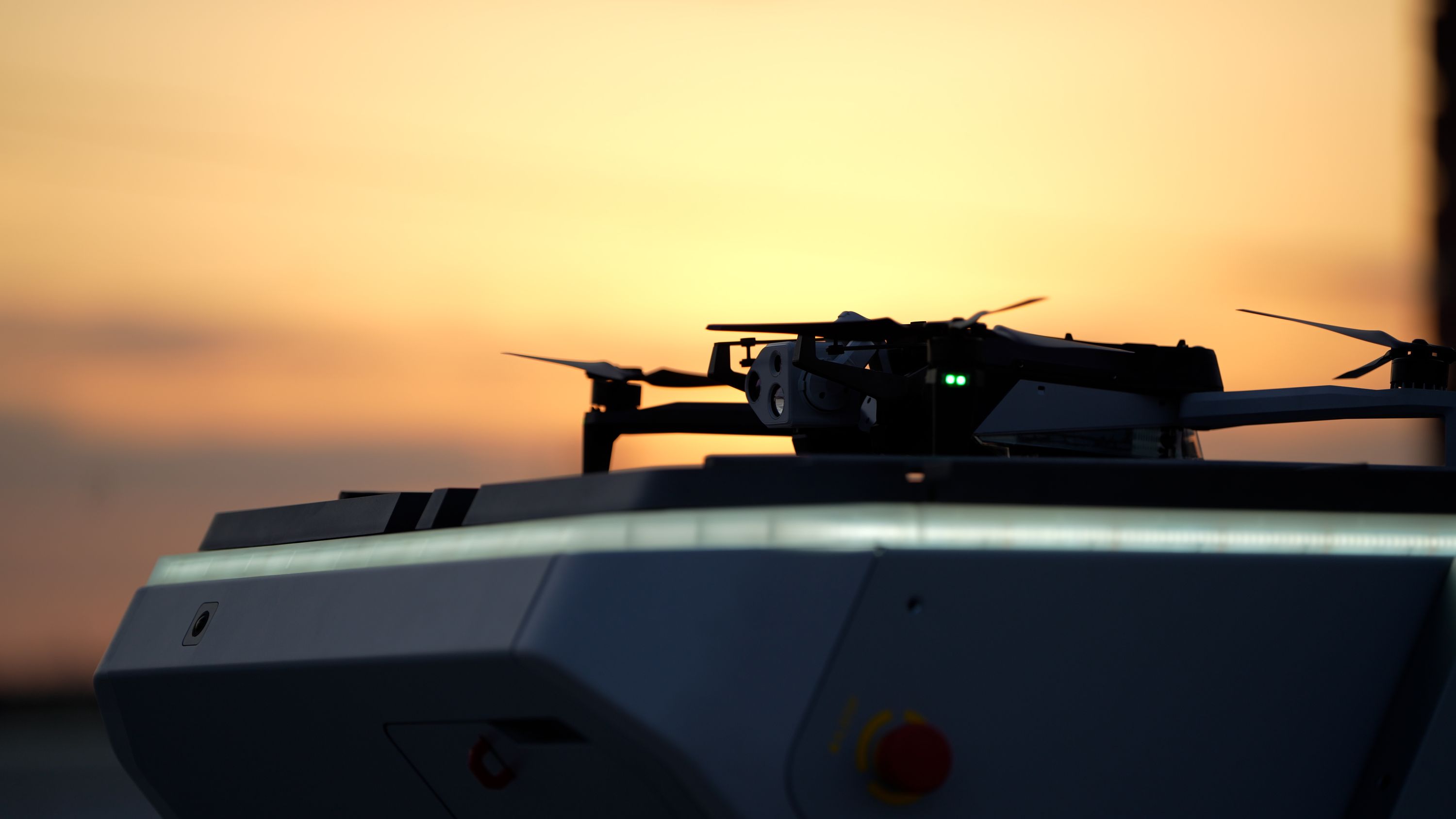How Utility Companies Use Drones for Inspections
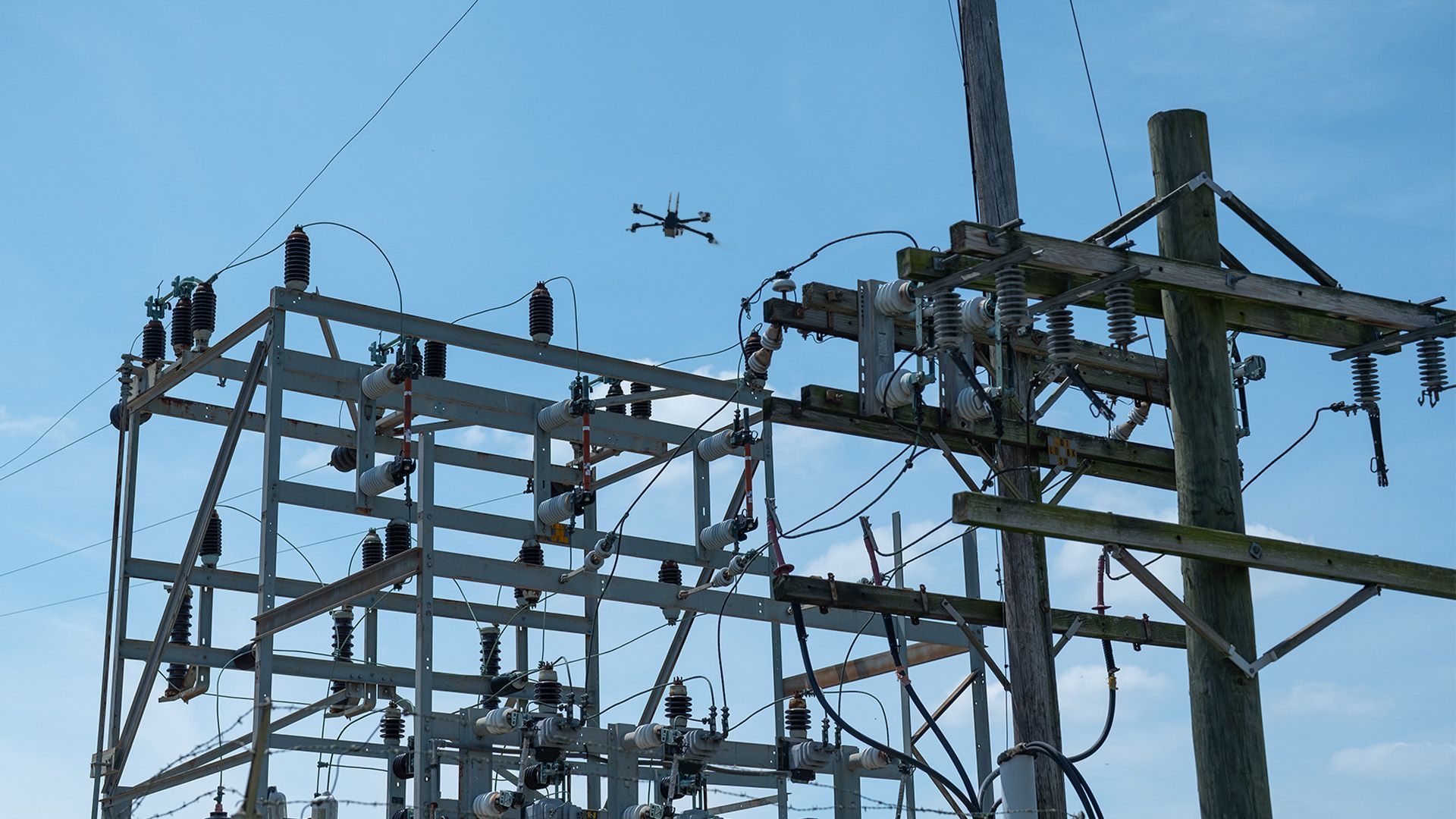
All utility companies need to do infrastructure inspections on a regular basis, primarily to proactively identify issues before they worsen. In the past, these inspections were always done by people entering high-up, energized areas, which presents a number of safety issues as well as other drawbacks. There are now more efficient ways for utility companies to do these inspections, and that is with drones. There are many advantages to performing drone inspections, including both financial and safety benefits.

Drones can effectively perform inspections on the different parts of utility structures, from the generating stations, to the transmission lines, to the substations. Read on to learn how drones are useful in structural inspections.
Types of infrastructure inspections and how drones are used
When it comes to utility company infrastructure, there are three different kinds of necessary inspections, each of which can be effectively performed by a drone: routine, emergency response, as well as surveillance and investigations in security scenarios.
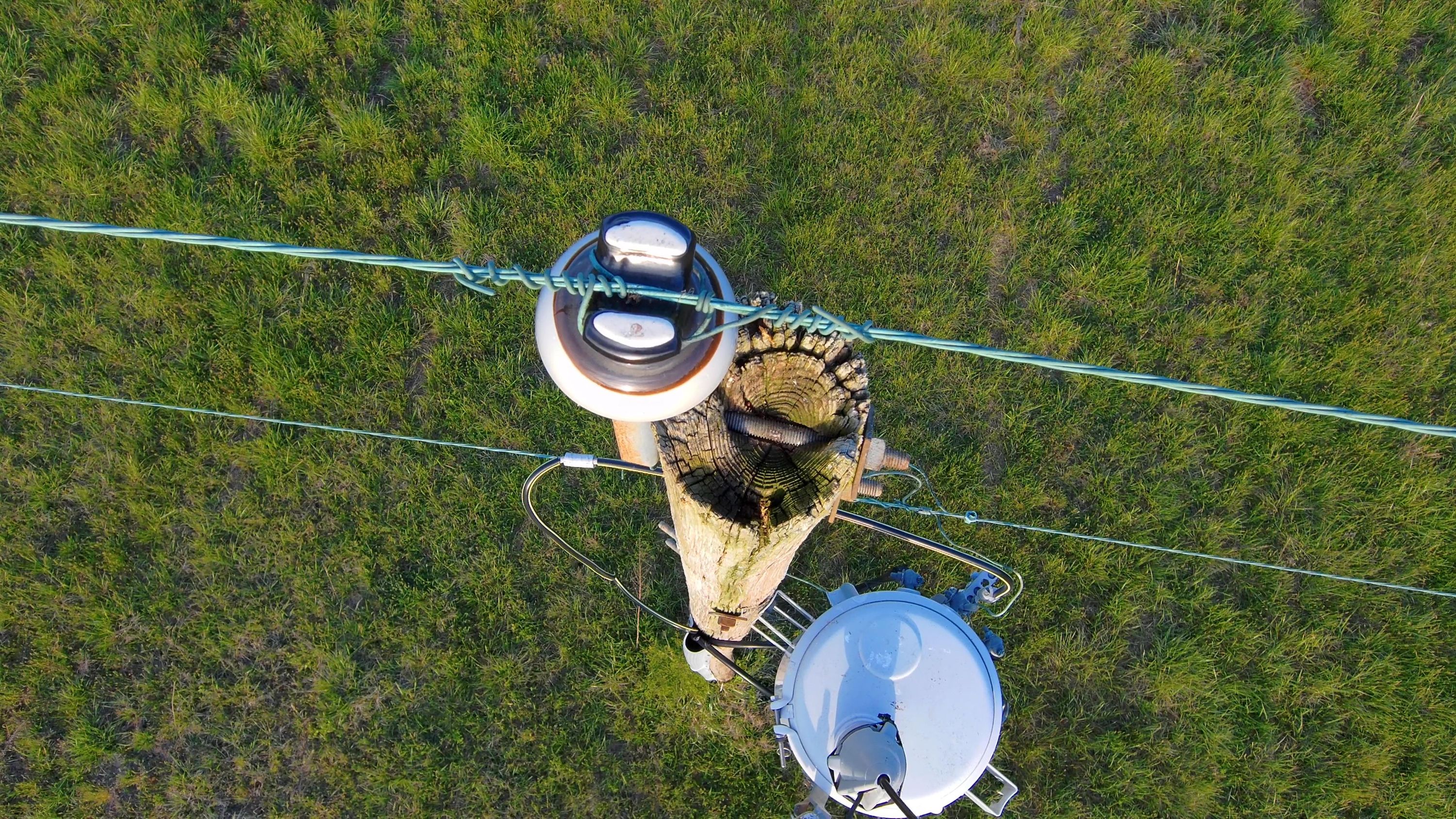
Routine inspections
These are conducted on a regular basis with the goal of identifying any issues before they cause an outage. This is called time-based maintenance, and it involves inspecting the infrastructure in intervals of days, weeks or months so that actions can be taken quickly if breaks or maintenance needs are discovered. If components are not working as they should, they can be replaced or fixed before the problem escalates. Drone inspections can help speed up this process and make it more efficient, preventing future outages.
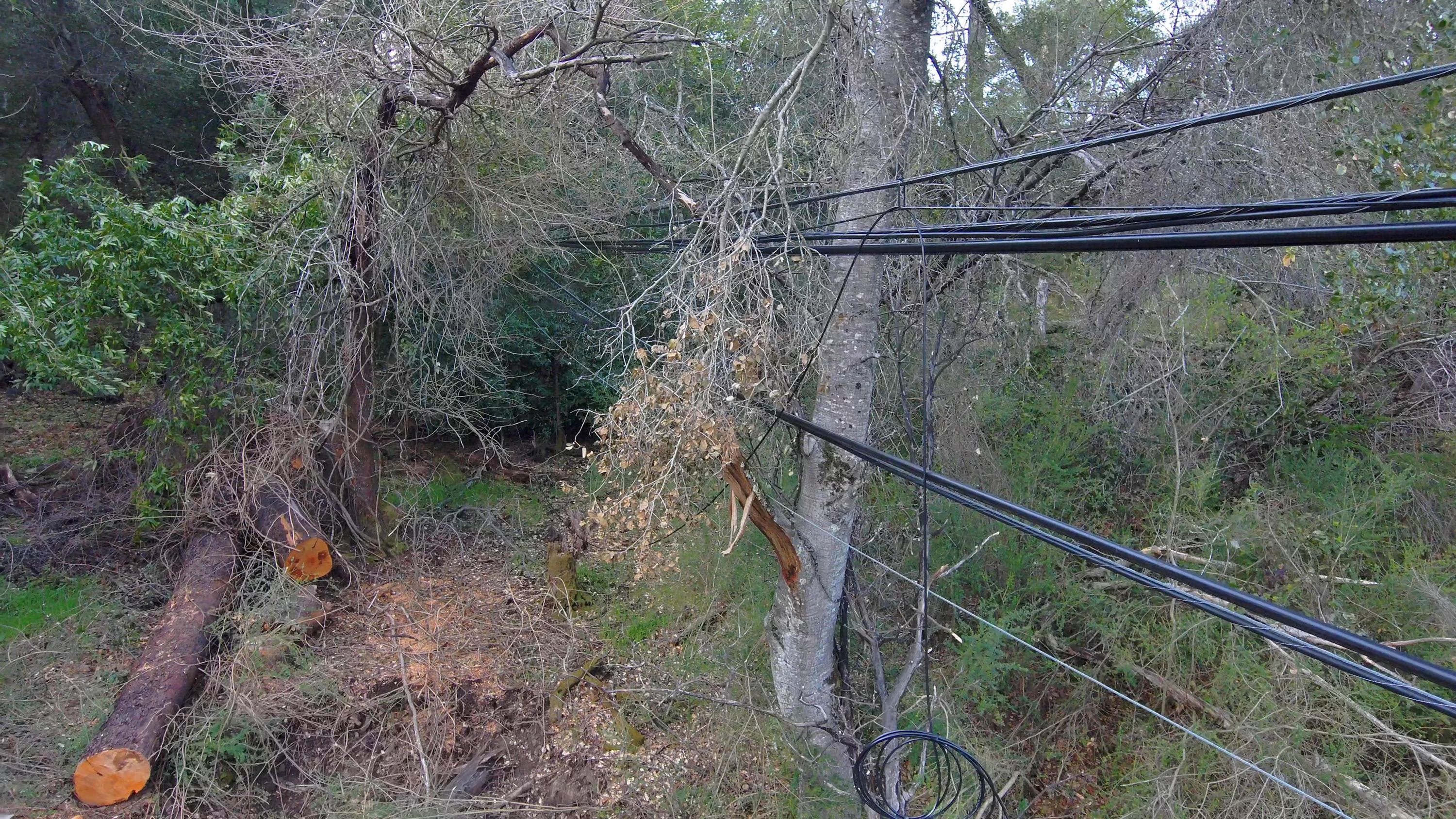
Emergency response
The emergency response scenario is not as common, but it’s the most disastrous. It occurs when a storm, flood, fire, or other emergency event causes an outage. In these cases, inspections are needed to identify the issue quickly so that power can be restored as soon as possible. Using drones for inspections can help facilitate the emergency response plan, as well as provide a safe and efficient way for the issue to be fixed.

Security scenario
This scenario typically entails monitoring with the goal of preventing individuals from vandalizing or stealing something from a substation. Someone might shoot at a substation to intentionally take out the power, and it’s also common for individuals to steal copper from substations to sell on the black market. In these cases, drones can be used to surveil the substation and its perimeter, which often deters people from committing crimes. If a security breach does occur, drone inspections capture video recordings, providing a record of the incident.
Drone inspections can work effectively in all three of these scenarios, helping to preserve assets, keep people safe, and ensure power stays on or is restored as quickly as possible.
The limitations of crew and bucket truck inspections without drones
Traditionally, transmission towers and lines are often inspected by either foot patrol or line patrol, both of which have drawbacks. The first disadvantage is that the data resulting from these inspections is likely subjective, depending on the person doing the inspection and what they deem to be acceptable or in need of repair. The only way to ensure data remains consistent is for the same person to conduct the inspection each time, which is both unrealistic and impractical.
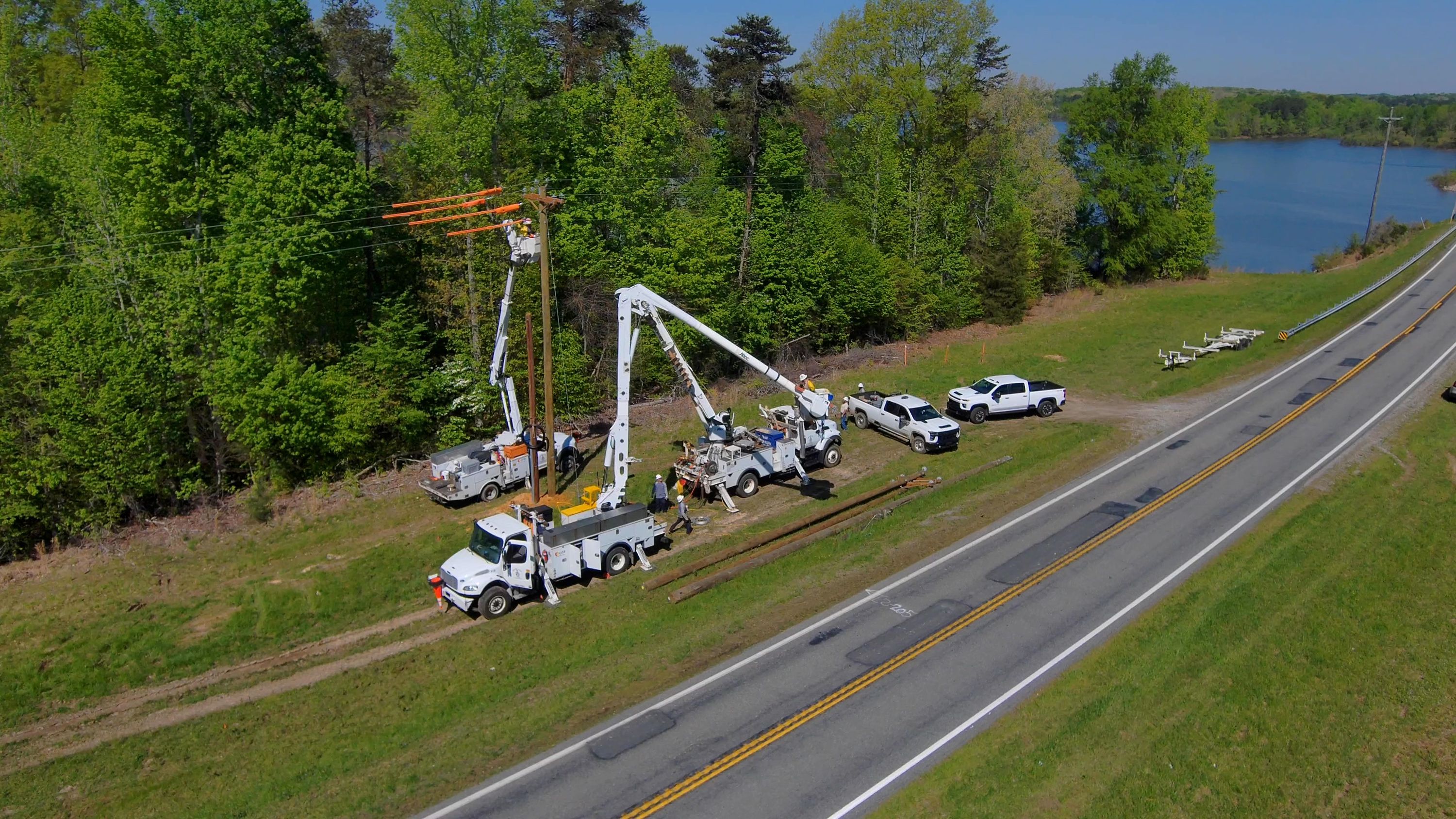
These inspection methods also present safety issues, as individuals must use bucket trucks to climb the towers and enter energized environments. Of course, one accident is too many, so the added safety benefit to your personnel alone makes drone inspections worthwhile. It also takes time and resources to roll a truck and a full crew, , making drone inspections the more efficient and cost-effective solution.
Why utility companies choose to use drones for inspections
Using a drone for inspection rather than a crew and bucket truck provides a number of advantages. One of the key advantages is that drones provide enhanced aerial coverage as compared to humans alone. Furthermore, while an individual might not be able to access infrastructure from every angle, presenting the opportunity for missed issues, drones can be steered to reach hard-to-access viewpoints to look at any area of interest more carefully.
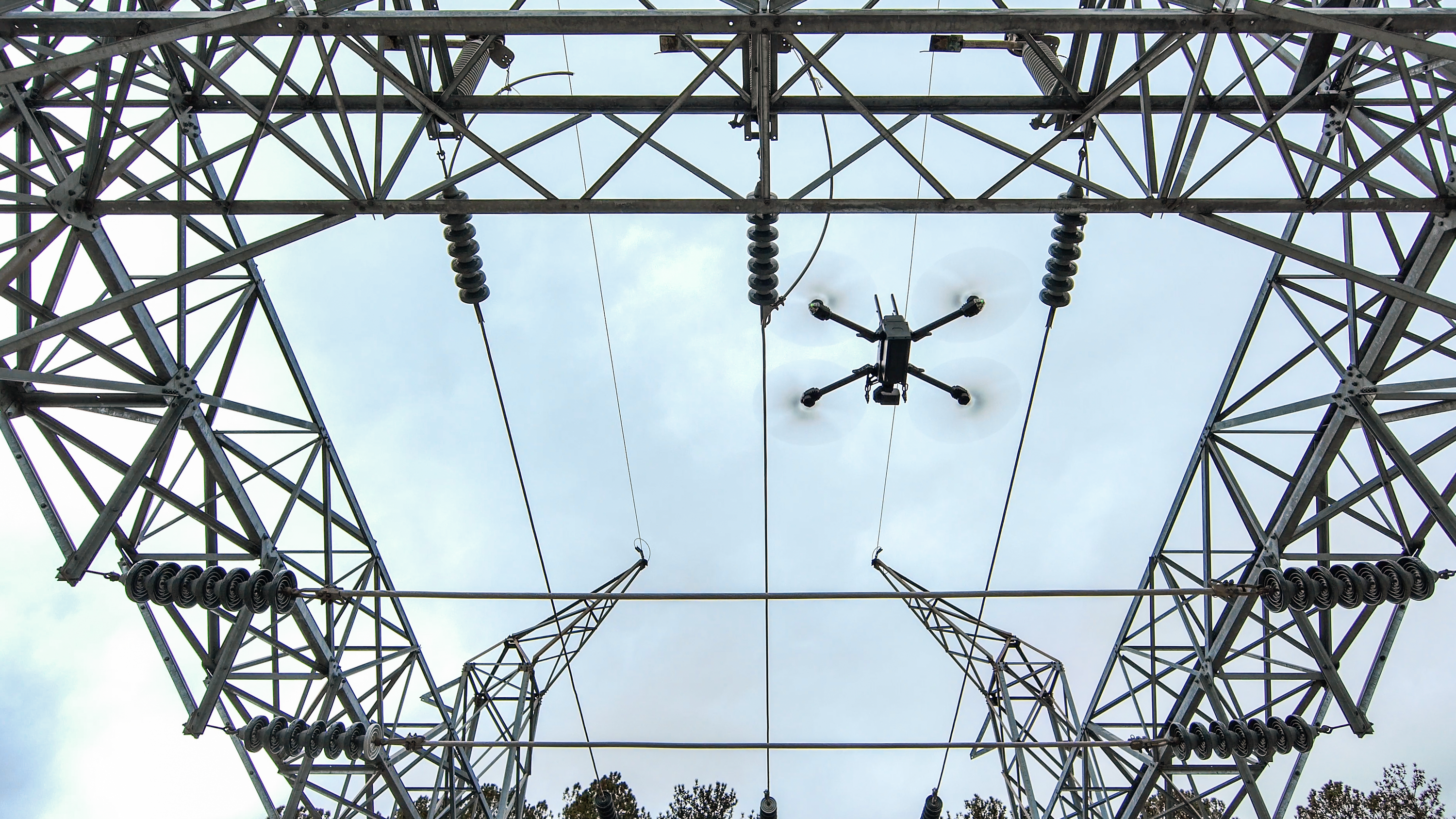
Drones such as the Skydio X2 offer a comprehensive view thanks to high-resolution cameras, and can fly within arms-length of electrical equipment. This allows the operator to record the inspections, providing you with a digital record and making the record-keeping process much simpler. This also eliminates the possibility for human error and subjectivity when it comes to identifying issues.
How thermal drones are advantageous in structural inspections
Using drones with the capability to identify heat and variances in temperature through thermal imaging is extremely useful. Thermal drones such as the Skydio X2 have a sensor that processes the infrared radiation coming from an environment. Then, using a specific color palette, the drone turns the infrared radiation into an image on a screen that the human eye can see.
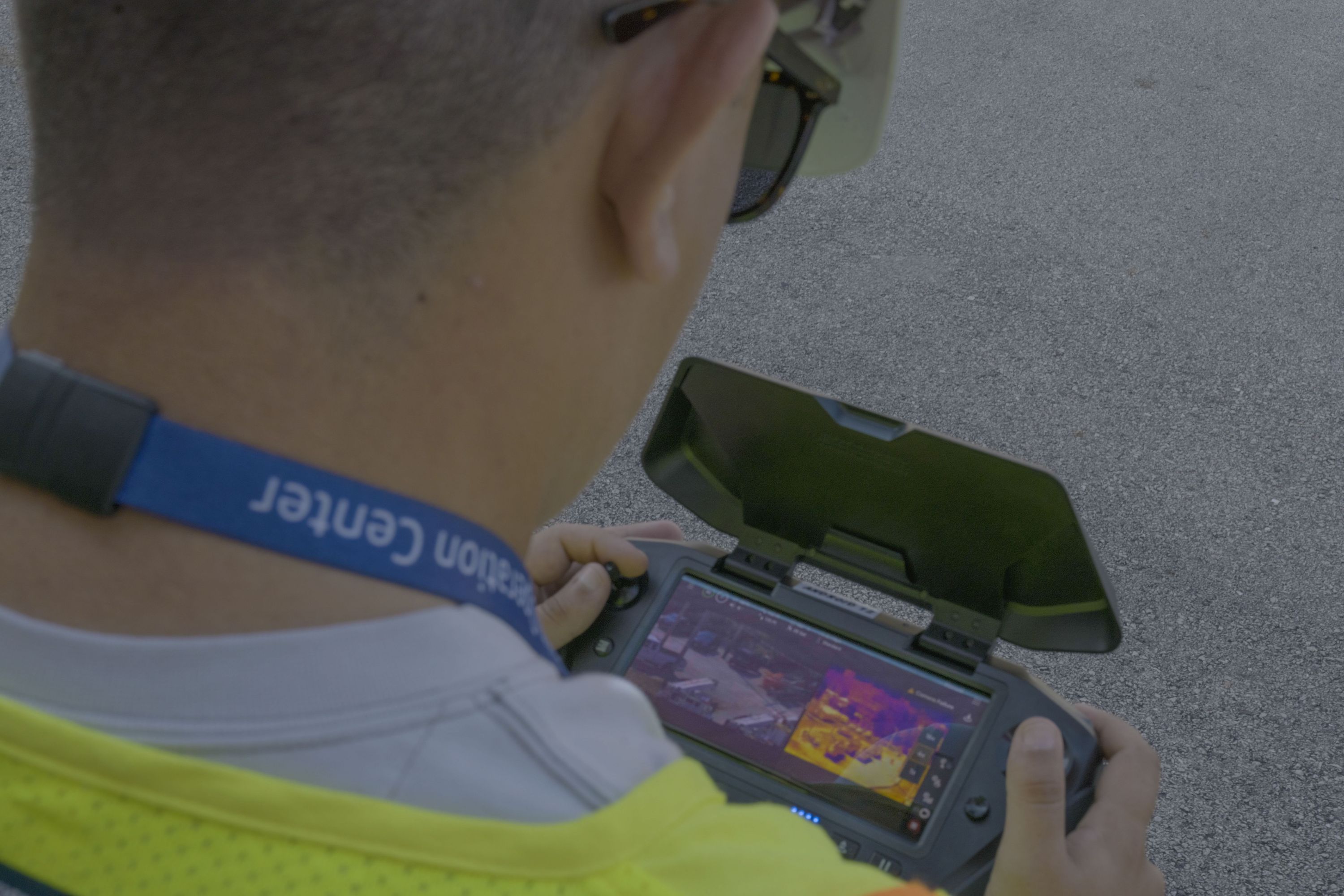
Typically, if a piece of equipment is overheating, it’s an indication that something is wrong, and it can be the precursor to an explosion. This technology allows for the swift and objective identification of abnormal temperatures, allowing for repair before the situation escalates.
Between the visual analysis and the thermal analysis these drones provide, you are essentially able to replicate exactly what a human would do during an inspection, but with even more precision. Thermal drones also allow for a faster diagnosis, which means a faster response in an emergency situation.
Safety is key, and drone inspections reduce risks
Perhaps the most beneficial aspect of drone inspections is the increased safety it provides. It removes the need for individuals to venture up the poles in bucket trucks or rappel down the sides of infrastructure in harnesses for inspection purposes, eliminating the risk of falling. It also reduces safety risks by keeping people out of energized environments as much as possible.
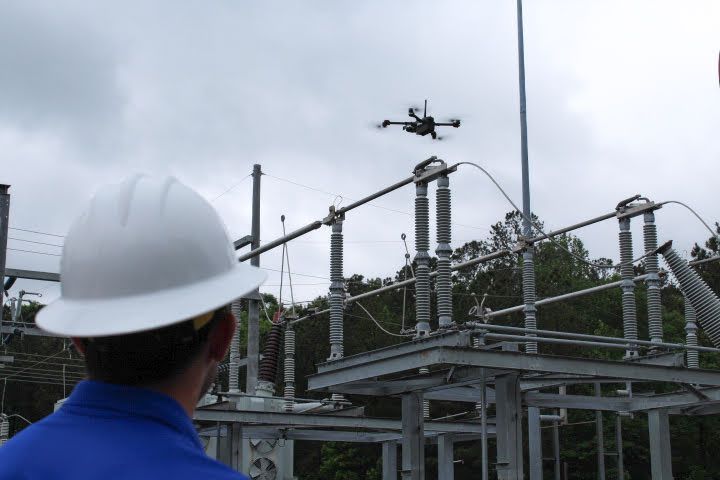
Take an emergency response situation as an example. Without a drone, this would require a person to go evaluate the situation and troubleshoot while maintaining increased caution depending on the dangers that are present. Following the inspector’s assessment, specialists must be called in to facilitate the repair. However, an inspection drone can accurately assess exactly what’s needed to repair a problem without having to send an individual into a potentially dangerous situation to evaluate the problem in the first place.
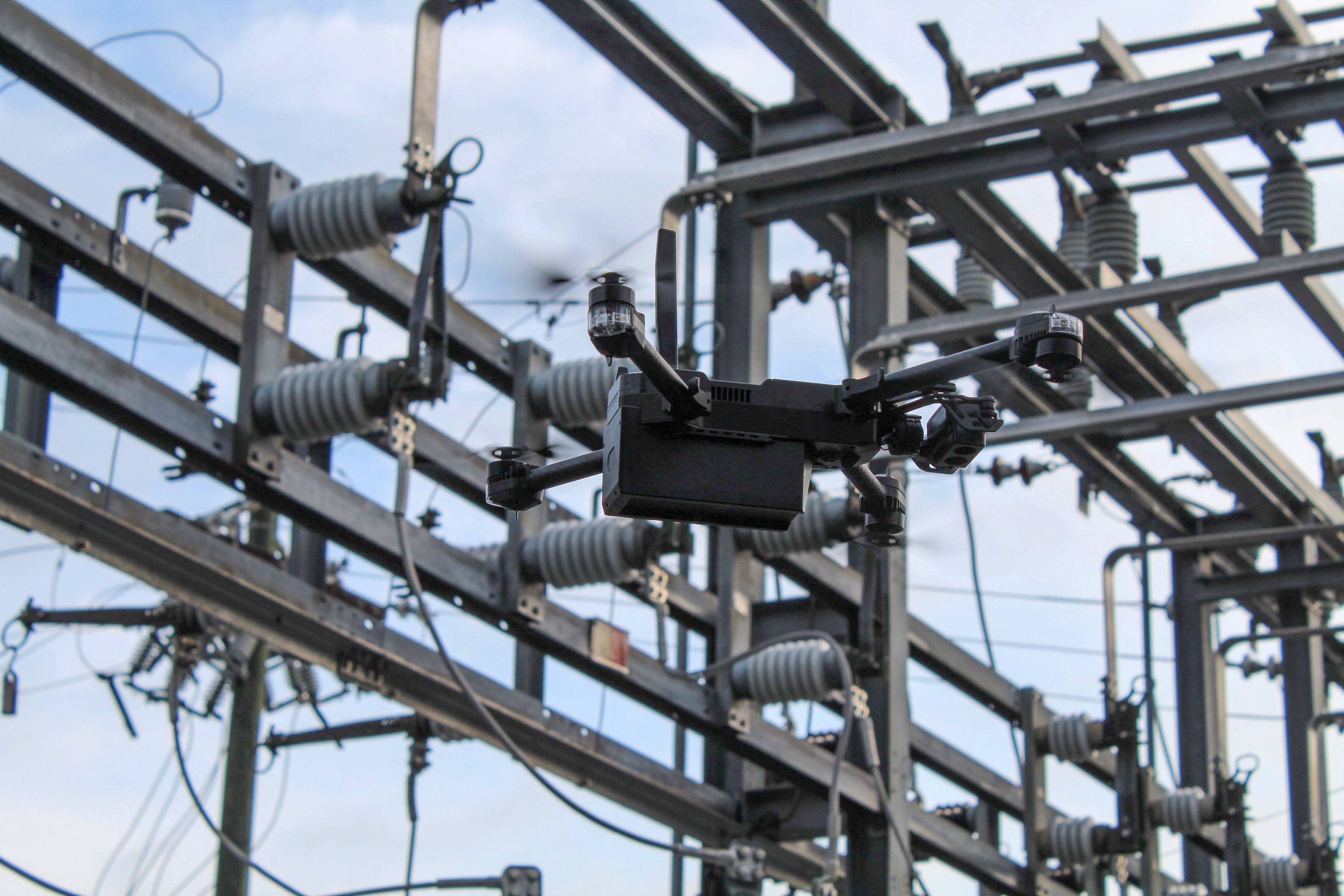
What gives Skydio drones an edge for inspections?
Unlike other drones, Skydio X2 drones are unaffected by electromagnetic interference (EMI). Meaning, they can fly in energized environments without an issue. The Skydio X2 model is the only drone on the market designed to fly near metal and electrical structures and remain unimpacted by EMI—which is a huge advantage when it comes to infrastructure inspections for utility companies.
Furthermore, Skydio drones utilize an AI-driven navigation system, which allows them to avoid anything in their path, and navigate easily through obstacle-heavy environments. This obstacle-avoidance feature means the Skydio X2 model is primed to perform inspections in hard-to-reach locations. Skydio drones can also operate in relatively harsh weather conditions—conditions in which people would not be able to perform inspections.
Drone inspections arm you with the information you need to make smarter decisions
Drones have the ability to capture and record data that is extremely accurate and relevant, and they can provide much more data than any human inspector could. Being equipped with this amount of accurate data makes it easier to know what to do when something is in need of repair, or goes wrong.
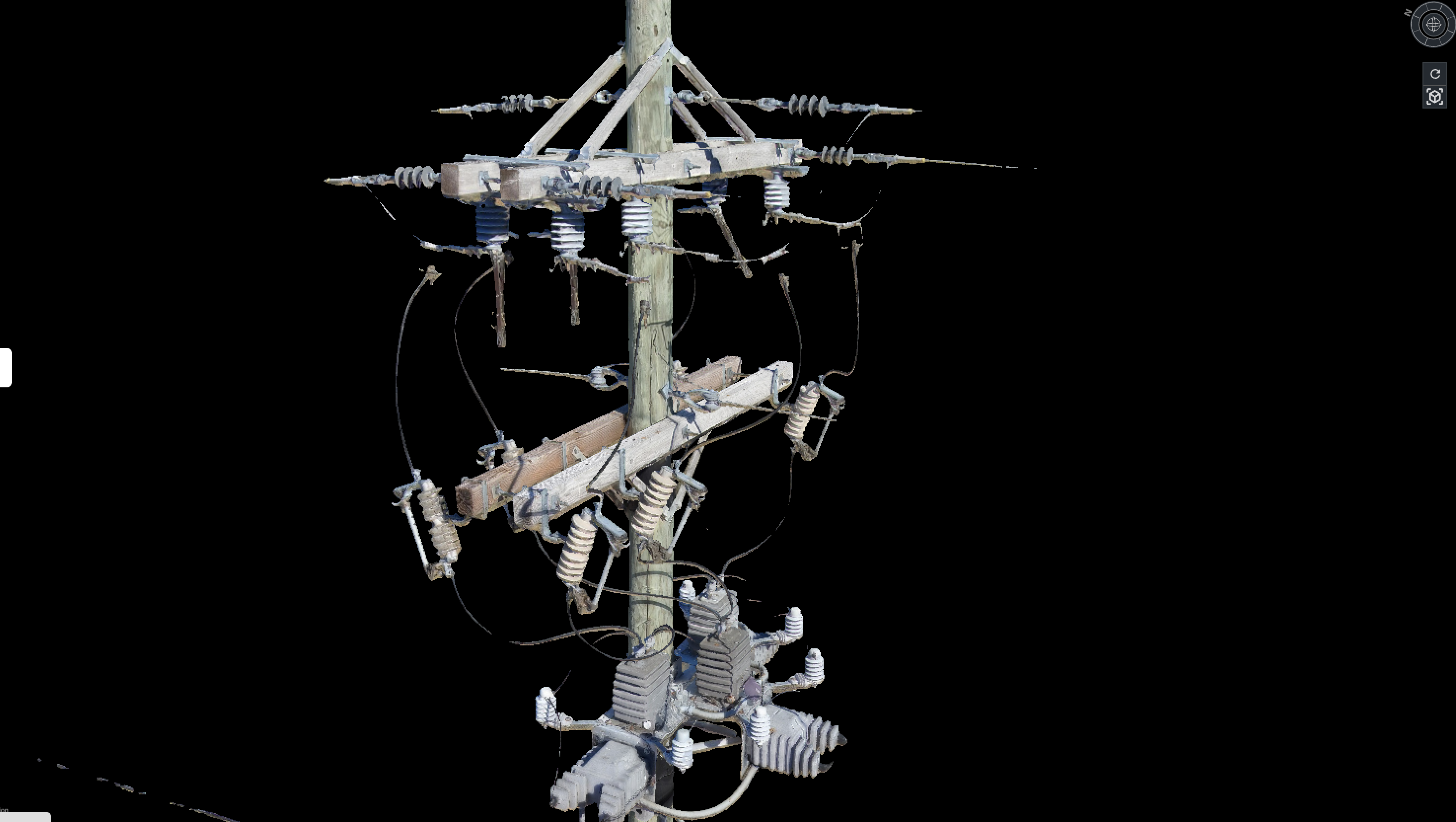
While budget and staff are always limited, it’s hugely beneficial that the information drones provide can help you make decisions with confidence and ensure you are allocating staff and resources in the most efficient and cost-effective way possible. Even if a tree has fallen on a line or if a pole is broken, having access to a drone provides you with an early situational awareness that allows you to send the correct number of people and the equipment needed to rectify the issue as quickly as possible.
Furthermore, in the case of an emergency, a drone can record the magnitude of a disaster and its precise location as a first response. It can also inform you about which roads might be closed or blocked as a result of a flood or fire, and it can help outline the best route for the response team to take.
The drone can go right up close to the problem area, helping you to determine exactly what needs to be fixed, and which staff are needed to respond to the emergency—giving the decision-maker all the information they need to make the right call.
Piloting a drone for inspection is easier than you might think
If you’re wondering how to do a drone inspection, the good news is that piloting a Skydio drone is simpler than most people realize. While older drone models required hours and hours of training for operators to become expert pilots, Skydio’s innovative technology has made flying drones much more accessible and user-friendly. Now, any inspector, no matter their skill level, can learn to fly a Skydio drone proficiently in just a few minutes. And in just four hours, that same operator can become an expert operator.
Though new technology can certainly seem intimidating, Skydio’s obstacle-avoidance feature allows you to fly a drone with confidence. Even brand new operators can cover more area in less time than a traditional crew and a bucket truck. Bucket truck crews can typically inspect roughly 100 poles per week, but Skydio drone inspections can cover approximately 300 poles per week.
Furthermore, part of what makes Skydio drones so easy to pilot is that they have a built-in GPS that connects to GPS and GLONASS satellites, which enhance the autonomous flight experience. Connected to the signals of these satellites, the drone can perform functions such as positioning, autonomous flight, return-to-home and navigation.
There are plenty of inspection techniques with drones
There are many options for the inspection techniques you can use with a drone, which include both pre-programmed missions and manual flights. A handful of the more common ones for utility company infrastructure are as follows:
- Time Based inspections: These are regular, scheduled inspections to ensure the ongoing health and safety of the infrastructure.
- Event-based inspections: These are inspections triggered by a specific event or incident, like a reported fault or malfunction. The drone is dispatched to investigate the issue.
- Storm damage flights: After a storm or severe weather event, drones are deployed to assess the damage to the infrastructure.
- Autonomous flight: In this technique, the drone autonomously navigates through a predetermined area. This is usually done using GPS and onboard sensors. The operator typically just supervises the flight to ensure everything goes as planned.
- Manual flight: In this method, a skilled drone pilot manually operates the drone to perform an inspection. This technique is usually used for smaller areas or specific structures requiring detailed examination.
You can watch drone inspection footage in real time, or after the fact
The inspector can watch the footage captured by the drone in real time, and for even better visibility, they can project the footage onto a larger screen using an HDMI cable. Multiple individuals in different locations can also watch the drone’s video feed if desired thanks to the Skydio Cloud, an online live stream.
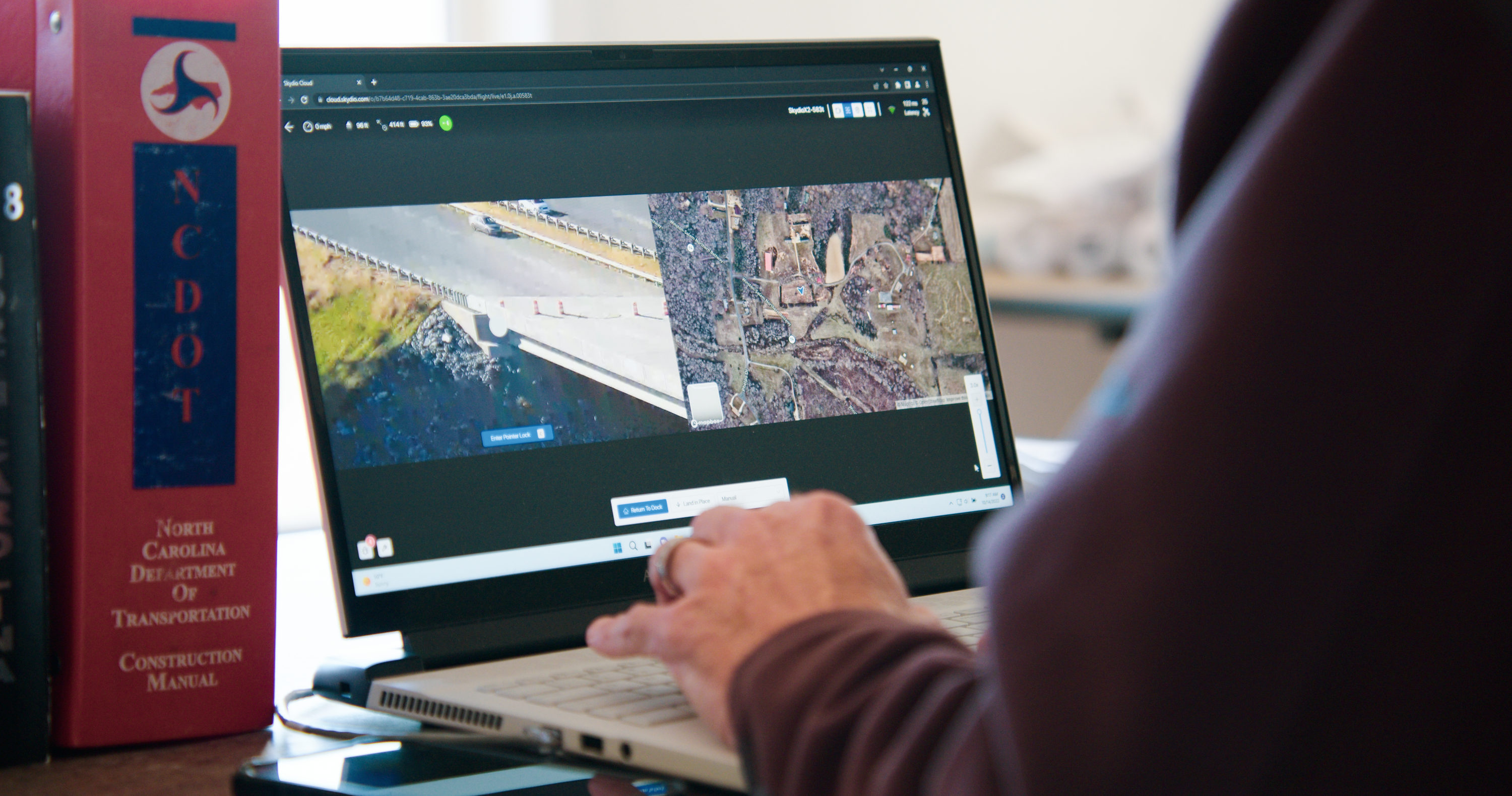
This allows as many people as needed to partake in the evaluation and decision-making process when coming up with a response plan. The drone’s footage can also be recorded, allowing you to go back and rewatch what was captured to make sure key details were not missed.

Furthermore, you do not have to worry about the security of the footage or information you are collecting, because Skydio Cloud utilizes AWS - U.S. Region cloud infrastructure to meet the highest level of security compliance. Skydio has an SOC (System and Organization Controls) 2 Type II Certification, ensuring data security and privacy for our customers.
Using drone inspections save utility companies time, money, and help keep people safe
In summary, conducting infrastructure inspections with crews and bucket trucks is costly and can be unnecessarily dangerous. It allows for subjective inspections and for potentially serious issues to go unnoticed. Also, in an emergency, when time is of the essence, relying solely on crews and bucket trucks can put people in danger and delay the repair process, leaving utility companies scrambling and people without power for longer than necessary.
Using drones such as the Skydio X2 for inspections can eliminate many of these issues, since they are simple to operate, cost-efficient, and keep more people out of potentially dangerous situations. These drones can reach within arms-length of electrical equipment without EMI interference, and can easily avoid obstacles thanks to their AI-driven navigation system. They capture more reliable and better-quality data than people can, ultimately helping you make more informed decisions with confidence.
Learn more about how Skydio drone inspections can improve your operations.
